Facebook Marketplace has become a go-to platform for car buyers seeking a diverse range of vehicles—from budget-friendly options to luxury models and rare classics. Based on recent trends and listings, here are five standout cars that have been making waves on the platform.
If you’ve ever tried selling a car online, you know some listings sit for weeks while others are gone in days. On Facebook Marketplace—where local buyers scroll nonstop for deals—certain cars consistently fly off the digital lot. These aren’t just random flukes; they’re vehicles known for reliability, affordability, and mass appeal.
Whether you’re a private seller trying to cash out quickly or just curious about what’s hot in the resale game, these five cars dominate the Marketplace for a reason.
1. Toyota Corolla (2008–2010)
A perennial favorite, the Toyota Corolla is renowned for its reliability and fuel efficiency. Models from 2008 to 2010 are frequently listed around $4,500, with some high-mileage examples available for as low as $3,800.
These vehicles are known to surpass 250,000 miles with proper maintenance, making them a dependable choice for daily commuting.
That’s right—the 2008 Toyota Corolla is the latest incarnation of the world’s number-one nameplate of all time. While it doesn’t have the cultural or historic significance of previous record-holders, the VW Beetle and Ford Model T, the Corolla has quietly been an automotive phenomenon.
Despite selling about 200,000 units every year in the United States, the Corolla nevertheless manages to blend into the automotive background with plain-Jane styling and personality. This Toyota economy car is about getting from point A to B reliably, year after year, with little worry and minimal spectacle. Sort of like that trusty Frigidaire in the kitchen.
Yet this appliance personality that has proved so successful is also what keeps the 2008 Toyota Corolla far from being our top choice in the economy sedan segment.
Although 2003 doesn’t seem like that long ago, all of the Corolla’s competitors have been replaced since then and it’s rapidly feeling long in the tooth.
Specifically, the recently redesigned Honda Civic has differing model styles, cutting-edge styling, more available convenience features and more power, while offering nearly equal fuel economy and reliability.
An all-new Corolla was delayed after its initial design was apparently deemed too plain in contrast to the Civic. The re-penned version is supposed to arrive for the 2009 model year.
We would suggest waiting for this 10th generation to arrive if you’re one of the 30 million people who have purchased a Toyota Corolla since 1967 and must have a new one. Otherwise, taking a close look at its many impressive competitors is a smart move.
Power for all 2008 Corollas comes in the form of a 126-horsepower, 1.8-liter four-cylinder engine. A five-speed manual transmission driving the front wheels is standard, and a four-speed automatic is optional.
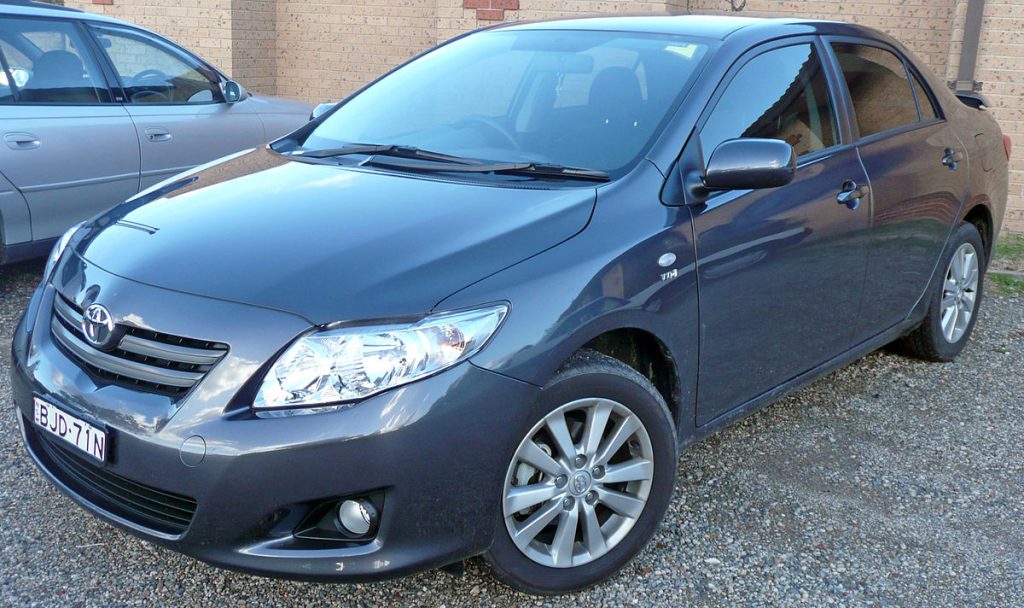
Fuel economy is at the very top of the economy sedan segment (neck and neck with the Civic) with 2008 EPA figures of 26 mpg city and 35 mpg highway with the automatic transmission.
The 2008 Toyota Corolla offers antilock brakes, full-length side curtain airbags and front-seat side airbags as optional features. A stability control system that also adds traction control and brake assist is optional on S and LE models equipped with an automatic transmission and ABS.
In National Highway Traffic Safety Administration crash tests, the Toyota Corolla earned five stars (the best score possible) for frontal-impact protection and four stars for side-impact protection. In 40 mph frontal-offset crash testing by the Insurance Institute for Highway Safety (IIHS), it received a “Good” rating (the highest possible).
The IIHS gave a worst rating of “Poor” to the Corolla for the car’s protection in side-impact crashes. That rating rises to “Acceptable” if the car is equipped with the optional side and side curtain airbags.
From a stop, the Corolla’s acceleration is acceptable but nothing more. During highway driving, it’s a quiet cruiser, with very little engine noise and even less wind noise.
Though not as sporty as some competitors, this Toyota offers an appealing compromise between handling and comfort. It rides smoothly enough to be used as a commuter car, while maintaining its composure when occasionally pushed around the corners.
The Corolla’s interior is furnished with high-quality materials and user-friendly controls that wouldn’t seem out of place in a more expensive car. In fact, its build quality is better than the latest Camry—especially in uplevel LE trim. However, unlike the Civic or Mazda 3, no one will ever call the Corolla’s design particularly dynamic or interesting.
Even with the car’s tall cabin, room in the front seats is only average, with a somewhat awkward seating position for the driver. On the plus side, two adults can sit comfortably in the backseat without ducked heads or pulled-up legs. Trunk capacity measures a generous 13.6 cubic feet.
Also Read: Top 10 EV Features That Come in Useful in Daily Commute
2. 1969 Ford Capri 1300 L
For classic car enthusiasts, a rare 1969 Ford Capri 1300 L has surfaced on Facebook Marketplace. This model, one of only 14 known to exist worldwide, has undergone an extensive £60,000 restoration and is listed at £42,000. With just 2,100 miles on the odometer, it’s a pristine example of automotive history.
The Ford Capri Mk1 1300L could easily be considered one of the rarest cars on the planet—and its rarity isn’t due to an astronomical price tag. When Ford first introduced the fastback coupe in 1969, it immediately caught the eye of working-class Brits.
Its stylish design helped, but what really sealed the deal was the range of available engines. Upon launch, the Capri Mk1 was offered with either a 1.3-liter or 1.6-liter four-cylinder engine, and for those craving more power, the GT variants bumped output up to 2.0 liters.
There were also numerous trim packages that added to the overall cost, but given that the base model Capri Mk1 1300L started at just 890 British pounds, it’s no wonder the car quickly gained popularity as a “blue collar sports car.”
What truly makes the Mustang-inspired European pony car so rare today, however, is the vanishingly small number of surviving entry-level models. Many original owners unfortunately modified their cars with “tasteless” aftermarket additions, which contributed to the scarcity of untouched examples.
At present, only 14 original Capri Mk1 1300Ls are known to exist. One beautifully restored example is being offered, but if you’re hoping to locate another 1969 Capri Mk1 1300L in pristine condition, you’re likely in for a serious challenge.

As rare as the 1300L may be, the all-wheel drive version of the Ford Capri Mk1 is even more elusive. Tracking down one of the remaining 14 Capri Mk1 1300Ls in existence already takes considerable effort, but it pales in comparison to the difficulty of finding one of the AWD variants.
The Capri Mk1 1300L launched at a particularly significant moment in automotive history—during the late 1960s, when Harry Ferguson was pioneering the implementation of all-wheel drive technology in passenger cars.
Around the same time the Capri began production, Ford’s Competition Department sent two Capri 1600GTs to Ferguson’s firm to have them outfitted with this groundbreaking AWD system.
The resulting vehicles were purpose-built for rallycross racing—four-wheel drive Ford Capri Mk1s capable of producing 160 horsepower. These AWD Capris weren’t just experimental; they were fully functional, race-prepared machines. Over time, further modifications pushed output to an impressive 252 horsepower.
However, the increase in power made the vehicle so aggressive and unforgiving to drive that it was considered almost too much for rallycross competition. This makes the AWD Capri Mk1 not only an obscure footnote in Ford’s performance legacy but also one of the rarest and most extreme variants ever created.
3. Ford F-150
The Ford F-150 continues to be a top choice for those needing a robust and versatile pickup truck. Known for its powerful engine options and towing capabilities, the F-150 is ideal for both work and leisure. Its spacious cabin and durability make it a popular listing on Facebook Marketplace.
The 2025 Ford F-150 is offered with a variety of engine options, beginning with a 325-horsepower twin-turbocharged 2.7-liter V-6.
From there, buyers can opt for a 400-horsepower 5.0-liter V-8, a 400-horsepower twin-turbo 3.5-liter V-6, or a 430-horsepower hybrid setup that includes a twin-turbo 3.5-liter V-6 paired with a 47-horsepower electric motor. Regardless of the engine chosen, all F-150 models are equipped with a 10-speed automatic transmission.
According to EPA estimates, the hybrid version offers an impressive driving range of up to 704 miles per tank and can also serve as a power source via an onboard generator—ideal for powering tools at work sites or providing electricity during outages. Buyers can select between rear-wheel and four-wheel drive configurations for any of the F-150’s available powertrains.
During our test drive, we found the F-150 provided a smooth ride and responsive handling. High-end trims such as the King Ranch benefit from a variable-assist steering system that sharpens maneuverability at lower speeds, delivering a more agile driving experience.
For those looking for superior off-road capability, the Tremor trim stands out with its 33-inch all-terrain tires, enhanced suspension system, locking rear differential, and a four-wheel-drive transfer case derived from the high-performance F-150 Raptor.
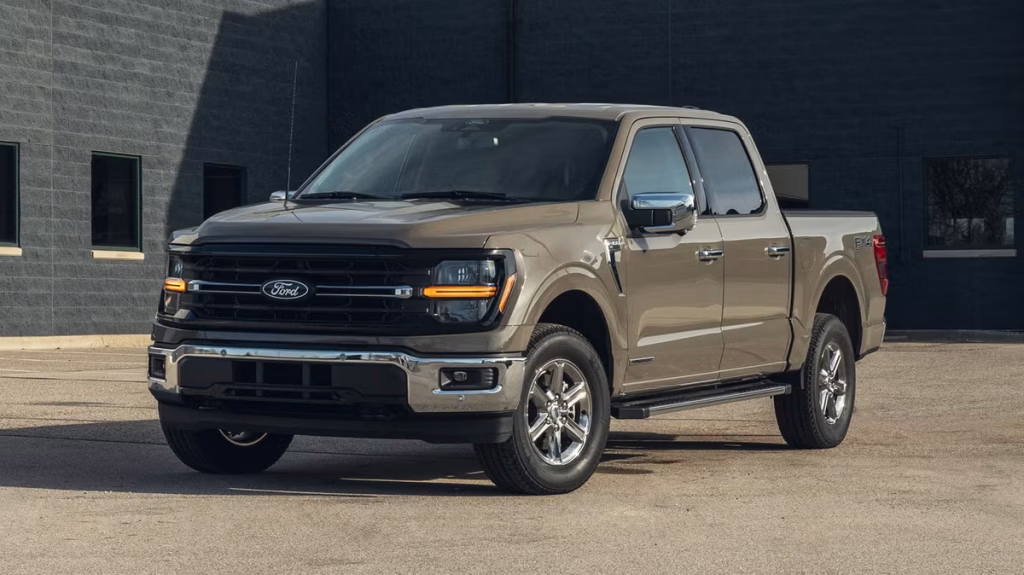
When it comes to acceleration, our test results show the 2025 F-150 with the hybrid powertrain reached 60 mph in 5.0 seconds. Comparatively, the 2024 F-150 Tremor powered by the 5.0-liter V-8 made the sprint in 6.0 seconds, while an earlier Tremor equipped with the nonhybrid 3.5-liter EcoBoost V-6 was even quicker, reaching 60 mph in just 5.3 seconds.
For towing and hauling, the F-150 remains highly competitive. Models fitted with the 400-horsepower twin-turbo 3.5-liter V-6 can tow up to 13,500 pounds. Choosing the tried-and-true 5.0-liter V-8 brings the towing capacity to 13,000 pounds, and the hybrid variant can manage up to 12,700 pounds.
Payload capacity peaks at 2,455 pounds. These figures keep the F-150 squarely in line with top competitors like the Chevrolet Silverado 1500, GMC Sierra 1500, and Ram 1500.
Fuel efficiency remains a strong suit, especially with the base turbocharged 2.7-liter V-6, which the EPA estimates at up to 19 mpg in the city and 25 mpg on the highway. The twin-turbo 3.5-liter V-6 is rated at 17 mpg city and 25 mpg highway, while the hybrid model offers projected ratings of 22 mpg city and 24 mpg highway.
In our real-world 75-mph highway fuel economy test—part of our comprehensive evaluation—the hybrid F-150 achieved 20 mpg, while the Tremor model with the twin-turbo 3.5-liter returned 19 mpg. Additional information about the F-150’s fuel economy can be found on the EPA’s website.
Inside, the F-150’s cabin is refined and well-appointed, especially in upper trims like King Ranch, Platinum, and Limited, where the level of luxury rivals that of the Ram 1500’s upscale interior.
Ford has outfitted the cabin with abundant storage options and useful convenience features that are especially helpful for those using the truck as a mobile office. One such feature is the fold-down shift lever for the 10-speed automatic transmission, which can be stowed to create a flat surface in the center console—ideal for working on the go.
The truck is also available with fold-flat front seats that can double as sleeping accommodations. Passenger comfort is a priority, with the crew cab variant offering the most spacious and family-friendly interior.
In the rear, the F-150’s bed can be fitted with an available onboard generator capable of delivering up to 7.2 kW of power—perfect for running equipment on job sites or powering electronics during tailgating events.
On the technology front, Ford includes a standard 12.0-inch infotainment display that uses an upgraded version of the Sync 4 software.
This screen size matches the optional display in the Ram 1500, although Chevrolet and GMC models offer a larger 13.4-inch screen. Standard tech features include Apple CarPlay, Android Auto, and a Wi-Fi hotspot.
Optional upgrades include built-in navigation, SiriusXM radio, and a premium Bang & Olufsen audio system. The Sync 4 system supports over-the-air updates, delivers real-time traffic and weather data through the navigation system, and offers integrated telematics for fleet users who need to monitor vehicle locations and usage.
Also Read: 10 Vehicles With Best Long-Term Fuel Economy That Save You Money Year After Year
4. Honda Vezel
The Honda Vezel stands out as a best-selling used car on Facebook Marketplace. This mid-size SUV is celebrated for its stylish design, reliability, and advanced technology features. Its affordability and performance make it a favored option among buyers.
Since it first launched in 2013, the Honda Vezel has consistently stood out as a top choice among compact SUV enthusiasts. This enduring popularity is largely due to the model’s ability to deliver a sporty driving experience while maintaining impressive maneuverability, especially in urban environments.
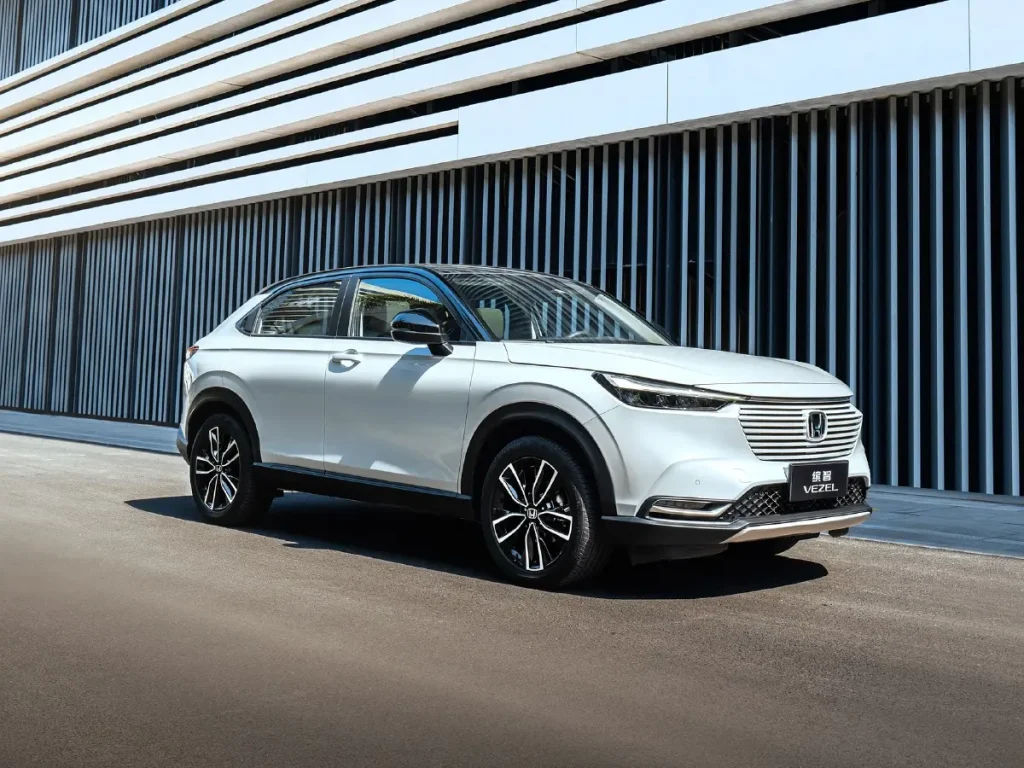
On top of that, it offers excellent fuel efficiency. These qualities have helped cement the Vezel’s reputation as a versatile vehicle that seamlessly adapts to a wide range of uses—from daily commuting to weekend getaways.
In addition to its performance and practicality, much of the Vezel’s appeal lies in its successful blend of SUV toughness with the everyday utility typically associated with minivans.
This distinctive combination has not only made the Vezel a standout in the compact SUV segment but has also led other automakers to follow suit with similar designs. In this article, we’ll take a closer look at how the Vezel has evolved over time and, furthermore, examine the unique traits that have fueled its lasting appeal.
5. Mercedes-Benz S-Class
For those seeking luxury, the Mercedes-Benz S-Class is a prominent listing on Facebook Marketplace. Models like the S 450, S 560, and S 63 AMG offer unparalleled comfort, style, and performance. These vehicles provide a premium driving experience and are often available at competitive prices on the platform.
The 2025 S-Class features two distinct plug-in hybrid powertrains that offer dramatically different approaches. The first, known as the S 580e, adheres more closely to a traditional hybrid layout but significantly surpasses typical expectations when it comes to both power and electric range.
In fact, it accelerates to 60 mph faster than the V8-powered S 580 and achieved an impressive 51 miles of all-electric driving during our testing. That it also comes at a lower price point than the S 580 makes it an especially compelling option.

On the other end of the spectrum is the AMG S 63 E Performance, which features a smaller battery and therefore a shorter electric range. However, its primary focus is extreme performance, delivering an astonishing total system output of 791 horsepower and a jaw-dropping 1,055 lb-ft of torque.
These two plug-in hybrids showcase the 2025 S-Class at its most distinctive and competitive yet. There are quite a few flagship luxury sedans available today, particularly with the arrival of new all-electric contenders.
Among them are the BMW i7, Lucid Air, and Mercedes’ own EQS. The BMW 7 Series stands out as the most direct rival to the S-Class in terms of powertrain variety and overall design philosophy — it has evolved to prioritize comfort and luxury much like the S-Class, stepping away from its formerly sportier demeanor.
For those who still prioritize performance-oriented driving, the Porsche Panamera remains a solid choice. On the other hand, if your interest doesn’t lie in electrified powertrains, both the Audi A8 and Genesis G90 are worthy alternatives.
Cars That Are Hard To Sell on Facebook Marketplace
Selling a car on Facebook Marketplace in the U.S. can be challenging, especially if the vehicle has a poor reputation, limited appeal, or a history of reliability issues.
Buyers on the platform are often well-informed and cautious, making certain models particularly difficult to sell. Here are five examples of cars that typically struggle to find buyers on Facebook Marketplace:
1. Mitsubishi Lancer (2013 and earlier)
The Mitsubishi Lancer, especially models from 2013 and earlier, has been criticized for its outdated design, lackluster interior quality, and subpar fuel economy.
Despite some improvements over the years, it failed to keep up with competitors in the compact sedan segment. These shortcomings have led to extended time on dealer lots and low resale values, making them less attractive to buyers.
During the global financial crisis, Mitsubishi made a series of poor decisions that ultimately led to substantial financial losses. Despite these setbacks, the company managed to stay afloat.
However, due to its weakened position, Mitsubishi was unable to develop or release new high-volume models. Meanwhile, the Lancer had already become outdated in the eyes of many consumers, who were increasingly turning their attention toward crossovers.
Nevertheless, Mitsubishi believed that with a modest refresh, it could extend the Lancer’s presence on the market for at least another year. This strategy came to life with the introduction of the 2016 Mitsubishi Lancer.
To maintain a fresh appearance, the 2016 Lancer received an updated front fascia characterized by smoother lines. The redesigned upper grille was now integrated into the reshaped plastic bumper.
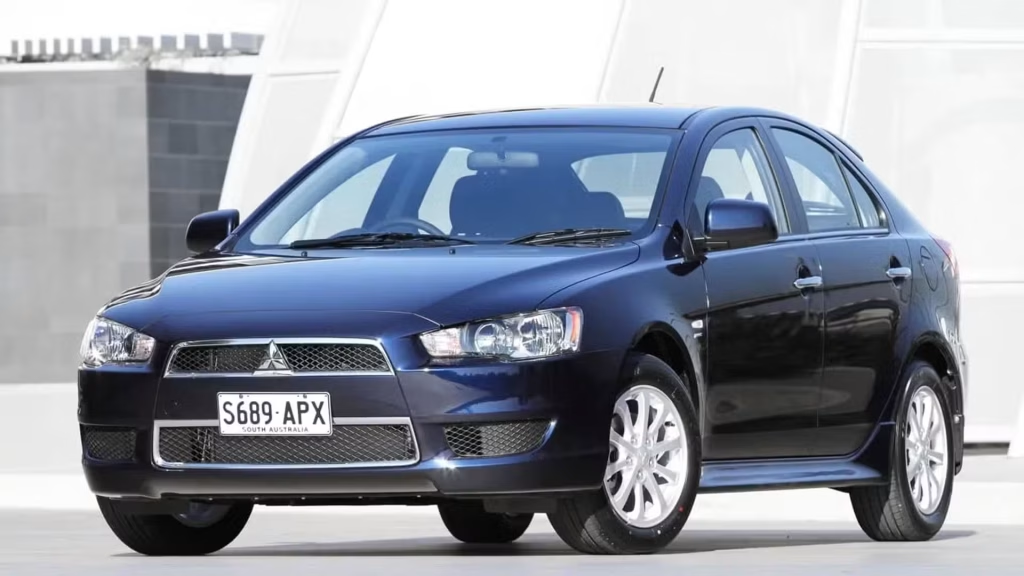
Mitsubishi moved away from the angular elements of previous models and instead opted for a more fluid design. The new lower air intake featured a curved form and was decorated with a hexagonal mesh pattern.
On either side, the company incorporated sculpted scoops that housed the fog lights, along with J-shaped LED daytime running lights to give the car a modern touch.
Mitsubishi offered the 2016 Lancer in four distinct trim levels: ES, SE, SEL, and the premium GT variant. Each trim came with alloy wheels as standard, with sizes varying between 16 and 18 inches depending on the specific configuration and options chosen.
In addition to exterior updates, Mitsubishi introduced new aerodynamic side sills, helping the aging Lancer adopt a slightly more contemporary look.
At the rear, the corner-mounted taillights featured clear lenses and separated light modules for turn signals, brake lights, parking lights, and reverse lights. The brake and turn signal lights were mounted on the rear quarter panels, while the parking and reverse lights were positioned on the trunk lid.
2. Volvo C30
The Volvo C30 hatchback, while offering a unique design, struggled in the U.S. market due to its limited practicality and higher price point. Sales were sluggish, and Volvo discontinued the model in 2013. Its niche appeal and the brand’s shift in focus have made it a tough sell on platforms like Facebook Marketplace.
The C30 was designed exclusively as a front-wheel-drive vehicle, available with either a manual or automatic transmission. There is a variety of engines to choose from, ranging from the more economical 1.6-litre diesel, which offers good fuel efficiency, to the more performance-oriented 2.5-litre five-cylinder petrol engine – the same engine found in the Ford Focus ST of its era.
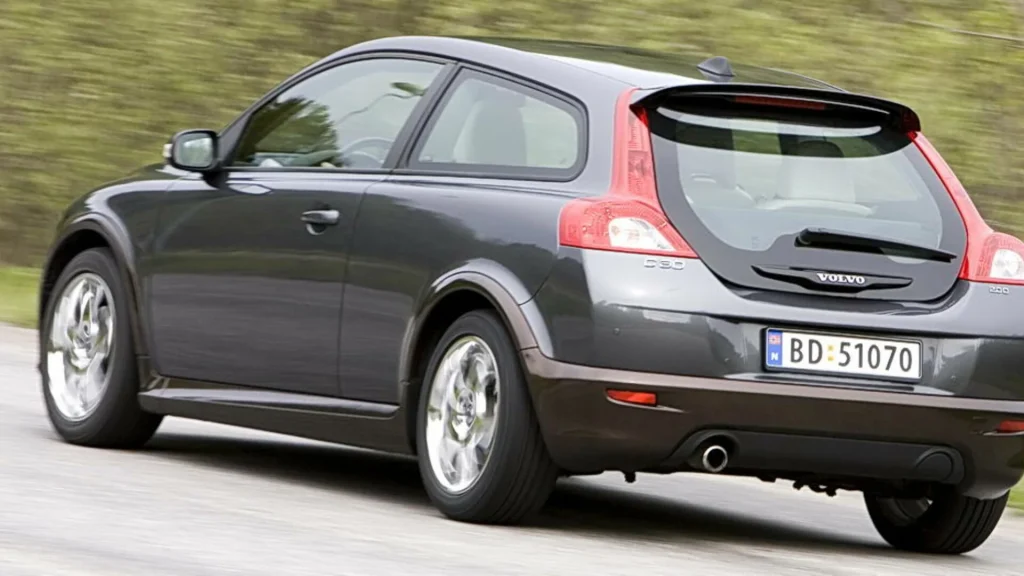
Ride & Handling: The driving experience is solid by the standards of small hatchbacks, offering good body control and composure. However, it doesn’t quite match the agility or fun factor of the Ford Fiesta, nor does it come close to the BMW 1 Series Coupé in terms of balance or driver engagement.
Interior & Practicality: Compared to other small coupés, the C30 is relatively practical. However, when compared to typical small cars like the Ford Fiesta or Skoda Fabia, it falls short. The C30 doesn’t come in a five-door version, the rear seats are quite cramped with only two available, and the boot space is on the smaller side.
3. Acura TSX Sport Wagon
The Acura TSX Sport Wagon combined luxury features with wagon practicality, but it failed to resonate with a broad audience. With sales under 1,500 units in its final year, it became one of the slowest-selling models in its class. Its rarity and the general decline in wagon popularity contribute to its difficulty in the resale market.
Our initial drive of the 2011 Acura TSX wagon revealed it to be quite the attractive vehicle, and its appeal has only grown since, particularly in terms of styling. The public seems to share this sentiment, as nearly every reaction we’ve encountered has been some version of, “Wow, the wagon looks even better than the sedan.”
This boost in visual appeal can be attributed to the long, tapering line of windows, the retention of the sedan’s muscular wheel arches, and the extended rear overhang, which proudly declares, “I’m a wagon, and I own it.” Especially in darker colors, the TSX wagon presents a strong visual presence.
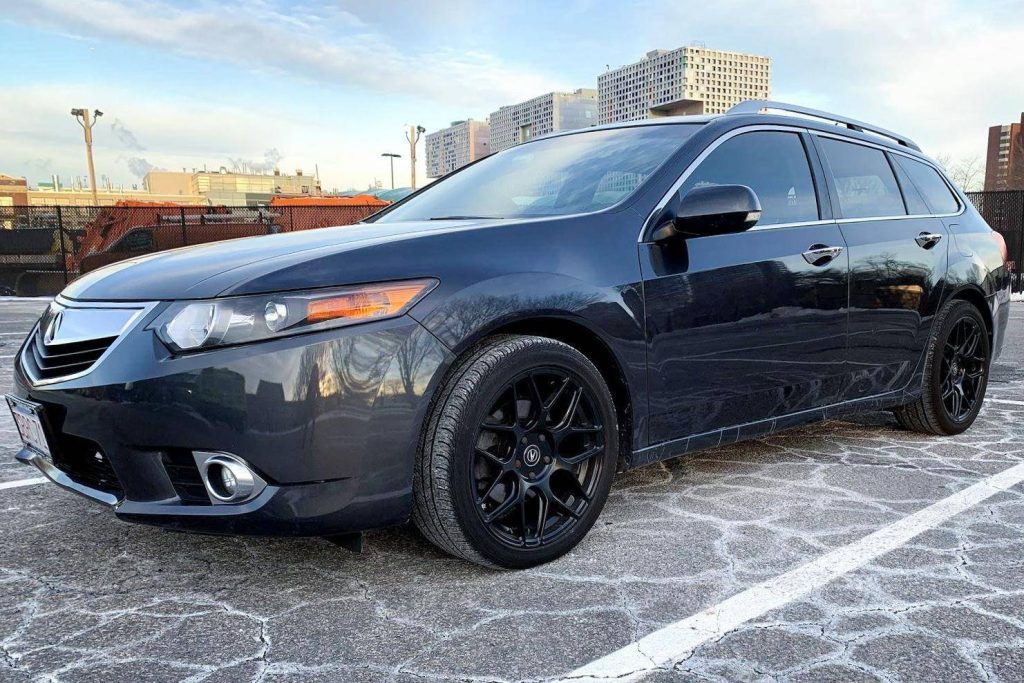
The wagon is available exclusively with Acura’s 2.4-liter four-cylinder engine, producing 201 horsepower and 170 lb-ft of torque, paired with a five-speed automatic transmission. It weighs about 130 pounds more than a similarly equipped TSX sedan and around 200 pounds more than TSX sedans with the six-speed manual.
The only four-cylinder TSX sedans we’ve tested have been manuals, and these models accelerate to 60 mph roughly a second faster than the automatic wagon, which takes a somewhat unimpressive 8.1 seconds.
Additionally, the wagon lags behind the manual sedan in the quarter-mile, recording 16.4 seconds at 87 mph, which is about a second and 5 mph slower.
4. Chevrolet SSR (2003–2006)
The Chevrolet SSR attempted to blend a retro-styled pickup with convertible features but ended up being neither practical nor performance-oriented. Critics panned it for being heavy, underpowered, and lacking clear purpose. Its unconventional design and limited utility have made it a hard sell in the used car market.
The Chevrolet SSR (Super Sport Roadster) was a distinctive vehicle produced by Chevrolet from 2003 to 2006, blending the elements of a pickup truck with the characteristics of a convertible roadster. It was designed to evoke the retro styling of Chevrolet’s 1940s “Advance Design” trucks, featuring a low-slung body, a retractable hardtop, and a truck bed.
The SSR stood out with its bold front grille, smooth curves, and eye-catching wheel arches, which made it a unique sight on the road. Under the hood, the SSR was initially powered by a 5.3-liter V8 engine producing 300 horsepower, but in 2005, Chevrolet upgraded the engine to a 6.0-liter V8 that pushed output to 390 horsepower.

The 2006 model year saw an even more powerful version of the 6.0-liter engine, and buyers could opt for a 6-speed manual transmission. With these updates, the SSR could go from 0 to 60 mph in around 6 seconds, offering strong performance for a truck-based roadster.
While the SSR was enjoyable to drive, its handling was not its strongest point. Due to its truck-like build, it was heavier and had a higher center of gravity than smaller sports cars, which affected its agility. Nevertheless, it provided a comfortable ride, and the retractable roof added to the fun of open-air driving.
Inside, the SSR offered a surprisingly refined interior with leather seating, high-quality materials, and a blend of retro and modern styling. However, the interior was a bit cramped, especially in the rear seating area, and the truck bed, while functional, wasn’t large, making it more of a visual feature than a practical asset.
5. Dodge Caliber (2007–2012)
The Dodge Caliber replaced the popular Neon but failed to impress with its cheap interior materials, poor performance, and unrefined driving experience. Despite its compact hatchback design, it couldn’t compete with rivals in terms of quality and appeal, leading to its discontinuation and low desirability among used car buyers.
The Dodge Caliber, which debuted in 2007, was a compact hatchback that aimed to replace the now-discontinued Dodge Neon sedan.
It marked a departure from the traditional compact car designs of the time with its SUV-inspired look and wagon-like proportions. The Caliber’s tall, boxy profile gave it a rugged, utilitarian appearance that was a significant departure from the sleek, low-profile compact sedans commonly seen in its class.
This unique design, combined with its higher ground clearance and larger wheel wells, gave the Caliber an edge in the eyes of drivers who wanted the practicality of an SUV without the full-scale size.
Under the hood, the Dodge Caliber offered a range of four-cylinder engines, including options for performance-oriented variants. The availability of all-wheel drive was a standout feature, especially in the compact segment, where most cars in this class typically offered front-wheel drive only.
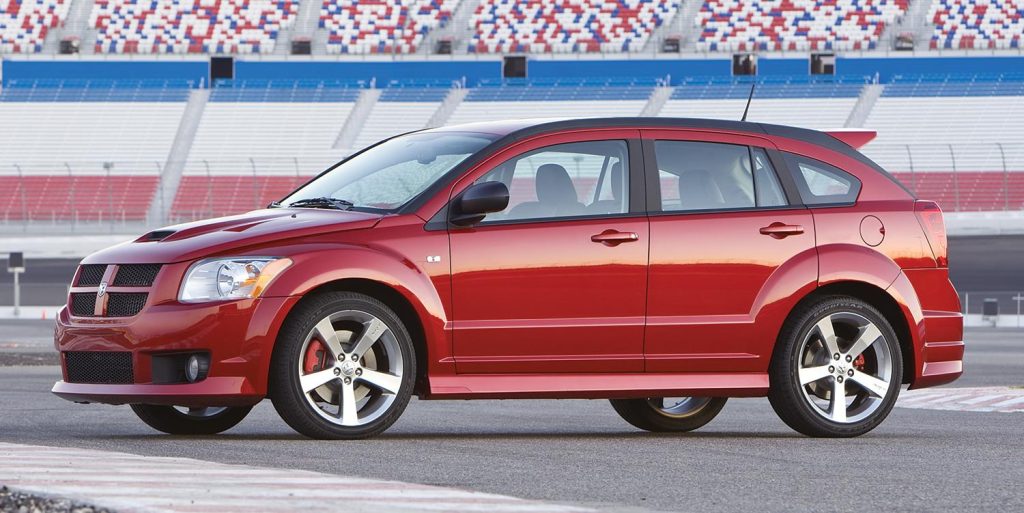
The all-wheel drive option appealed to buyers living in areas with harsher weather conditions, providing better traction and handling in rain or snow. However, while these features seemed promising, the Caliber’s performance fell short in comparison to its competitors. Many reviewers pointed out the lack of refinement in its driving dynamics.
The handling was often described as less responsive and more sluggish than other compact cars in its category. The ride quality was also inconsistent, with some models feeling stiff and uncomfortably bumpy.
In terms of engine performance, the Caliber’s four-cylinder engines did not offer the same level of smoothness or power delivery as those found in rival compact cars, leading to criticism for being underwhelming in both acceleration and highway driving. Moreover, the interior quality was another area where the Caliber failed to meet the expectations set by competitors.
While the cabin had a functional design and ample space, it was often criticized for using lower-grade materials that felt cheap or plasticky. This was in stark contrast to rivals like the Honda Civic and Toyota Corolla, which boasted more refined interiors with better materials and overall fit and finish.

